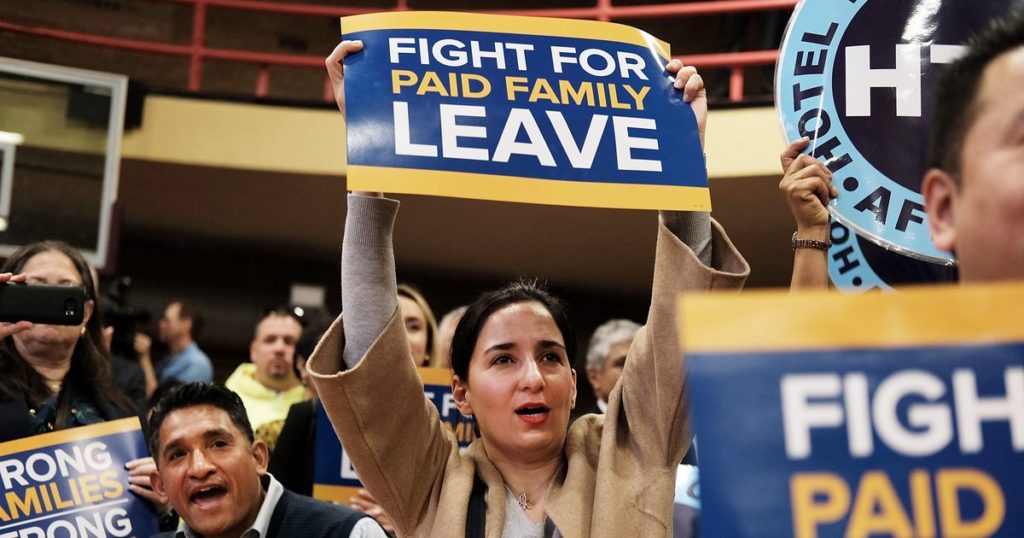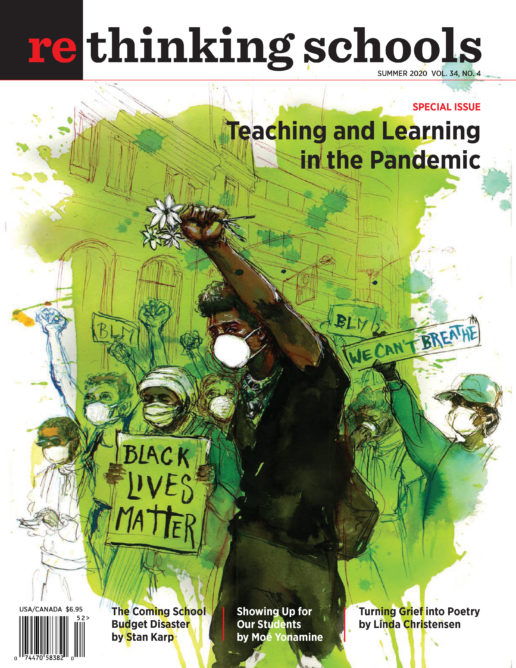Paid Leave in the Time of a Pandemic

Educators know firsthand what lack of paid family and medical leave means for their students and families — and for themselves. Now, the pandemic has dramatically elevated the need for such policies and the degree of support across the political spectrum for government action. In its relief measures, Congress, with bipartisan support, included federal laws for paid sick days and paid leave for both private and public sector employees. (Teachers are covered if public employees or if they work for a private school of fewer than 500 employees.) At the same time, corporate lobbyists rushed in to limit the reach of those provisions. The paid leave movement and its legislative champions are now stepping up demands to close the loopholes those lobbyists helped include and to create universal and permanent solutions.
The Families First Coronavirus Response Act (FFCRA) — which is separate from the frequently discussed CARES Act — guaranteed many workers in companies with fewer than 500 employees 10 paid sick days if they catch the COVID-19 virus, need to care for a family member who is ill, to deal with school or work closings, and other virus-related issues. They will also be able to access up to 12 weeks of emergency leave (10 weeks paid) to care for children whose schools or child care are closed.
The inclusion of these planks reflects a striking new awareness that time to care is essential to the public health and economic security of all. It was the first-ever federal law for private sector employees
People don’t realize they lack paid leave until they need it; the pandemic has meant that millions of people in the United States experienced that realization abruptly and at the same time.
This would not have been possible without the work of a growing movement over the last 15 years. Organizers and activists for paid family and medical leave have often noted that people don’t realize they lack paid leave until they need it; the pandemic has meant that millions of people in the United States experienced that realization abruptly and at the same time. This has created an extraordinary opportunity for the coalitions around paid leave to increase connections with affected workers and their families, and engage them in the fight for meaningful paid time to care.
During the 2016 election and beyond, the Trump White House and its allies have described themselves as champions of paid family leave. However, the leave they want applies only to care for a new child (with funds coming at the expense of Social Security or the child tax credit). The broader, progressive movement has been demanding comprehensive, universal paid family and medical leave. This pandemic has made it painfully clear: Any program must also include time to heal and to care for loved ones impacted by an illness.
While advocates celebrated the progress in the FFCRA, intense lobbying by the Chamber of Commerce and right-wing groups like the Independent Women’s Forum greatly narrowed its impact. Paid leave policies were restricted to the current emergency and tens of millions of private sector workers were excluded, including those who work at corporations of 500 or more. The Department of Labor (DOL) regulations make it easy for small companies (under 50 employees) to exempt themselves with no documentation. The DOL also made a broad-brush definition of health and essential workers — people who can be told, “You’re too important not to show up for work.” Emergency paid leave, while enormously helpful for parents dealing with school closings, does not apply to the longer time needed for COVID-19 sufferers to recover or provide care for family members with the virus. And none of the policies touch those who need paid time to heal or care for a loved one for any other ailment.
Family Values @ Work, a network of coalitions in 27 states that has been fighting for — and winning — paid leave since 2003, has seen a jump in organizing since the pandemic began. Fourteen states have clarified how existing paid sick days or paid leave laws cover COVID-19 purposes, six cities and states have expanded their laws, and more new policies are in the works. We’re seeing innovative outreach using digital organizing and in-depth phone conversations to help people learn, exercise, and expand their rights.
Before the pandemic, this network joined with other national partners (including the National Education Association) to launch a federal campaign called Paid Leave for All. Together we’re aggregating power and creating new tools to push for permanent solutions. The aim is for advocates to speak with one voice to say the follow-up bills that Congress puts forth must prioritize workers — not lobbyists, big corporations, or the ultra-wealthy. Frontline and childcare workers, whose labor ensures that we can continue to function, need meaningful investment. The bill must support women, on whom the toll of COVID-19 is disproportionately hard, by ensuring they have the gear and policy protections they need. And it must respond to the urgent health and economic needs of Black and Brown communities, who have been disproportionately hit by the virus and have largely been cut out of the other relief bills.
Educators are key partners in this fight. Instead of “opening the economy,” educators can help organize to open the door to a new economy that rights these inequities and honors the invisible caregiving work that undergirds every industry and every workplace.
Subscribe to Rethinking Schools magazine at bit.ly/SubscribeToRethinkingSchools.

